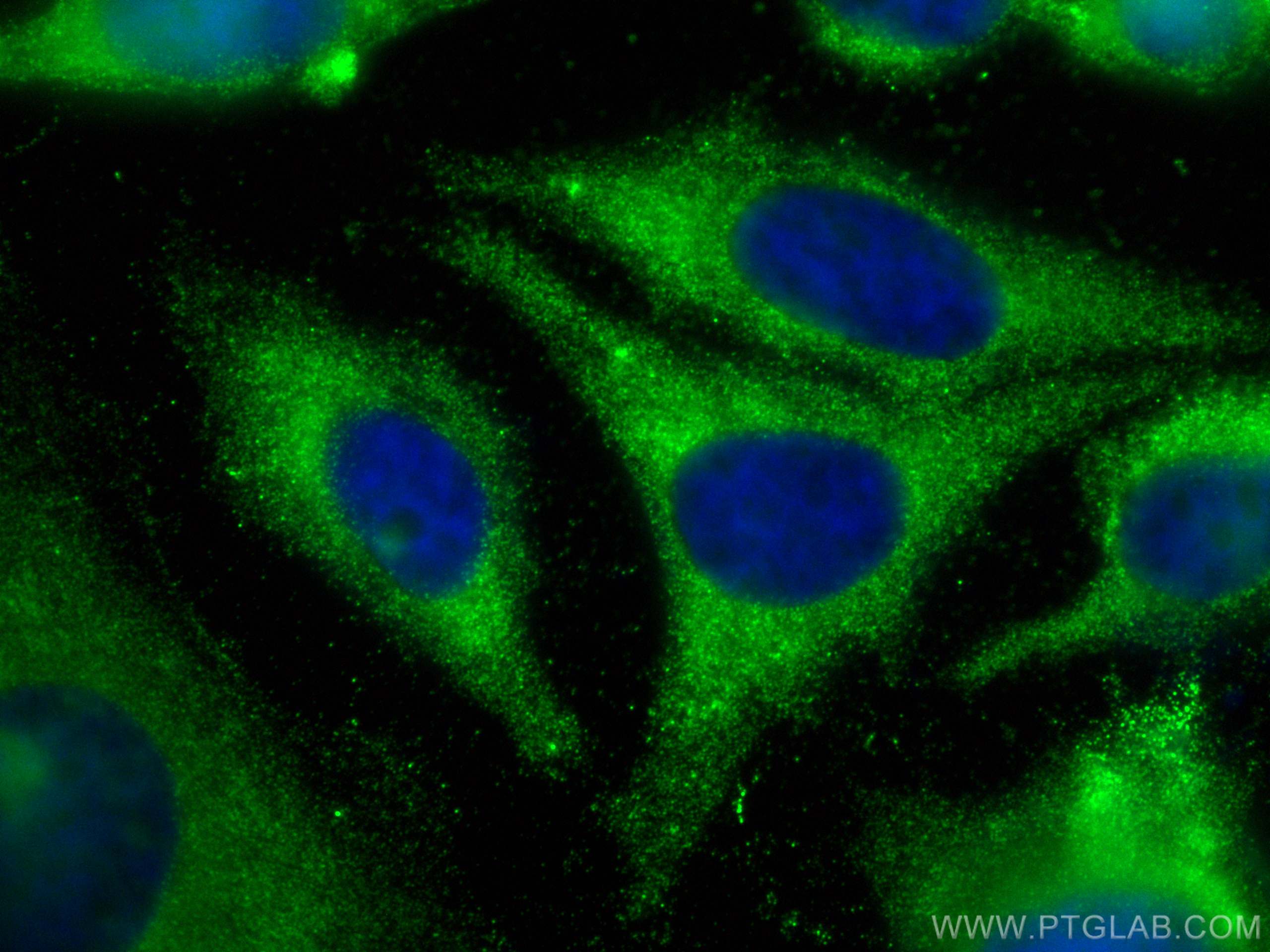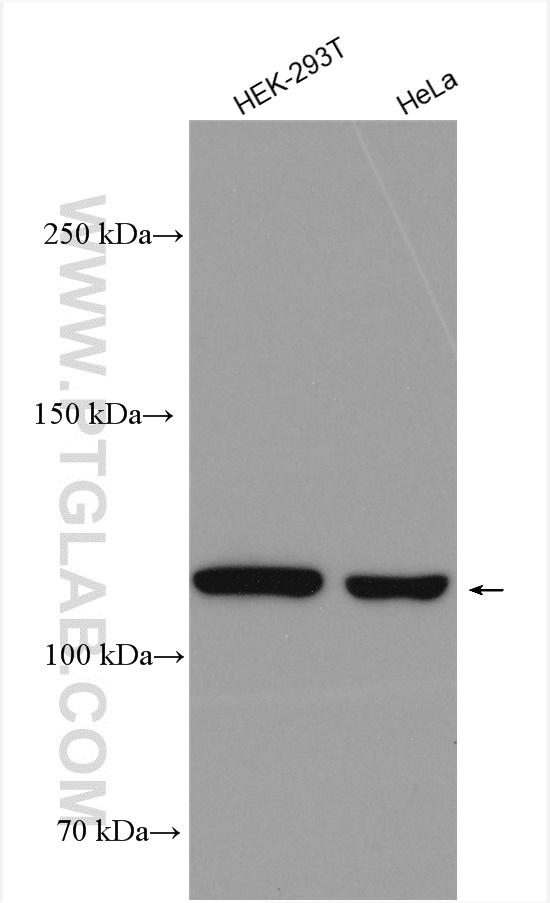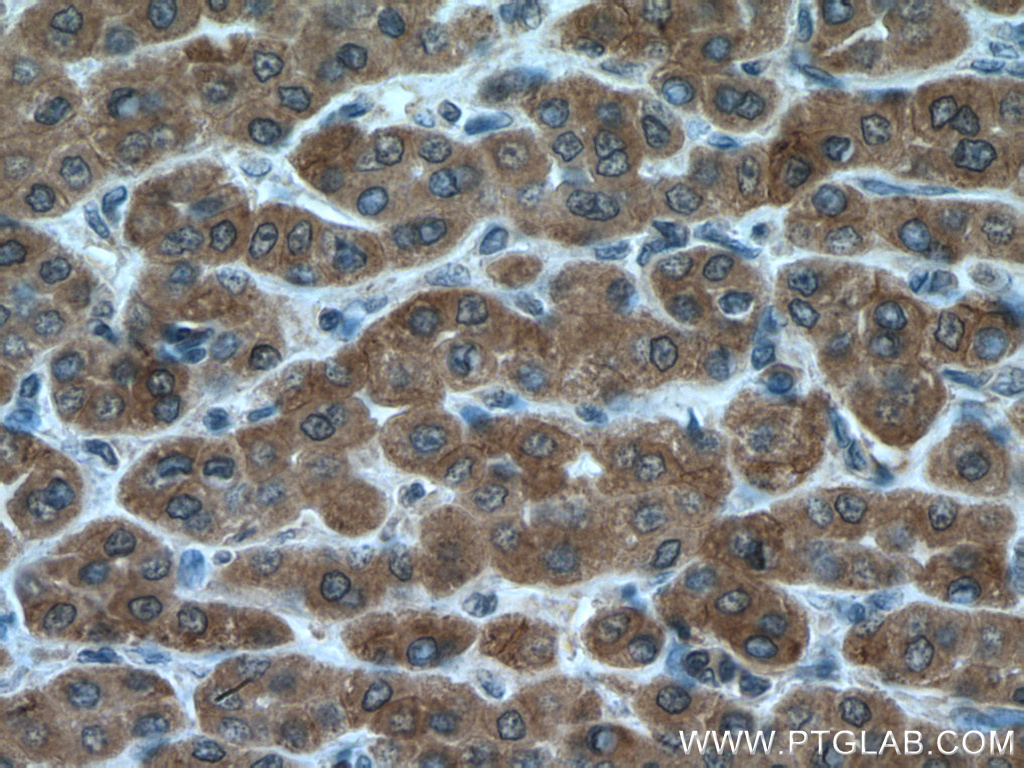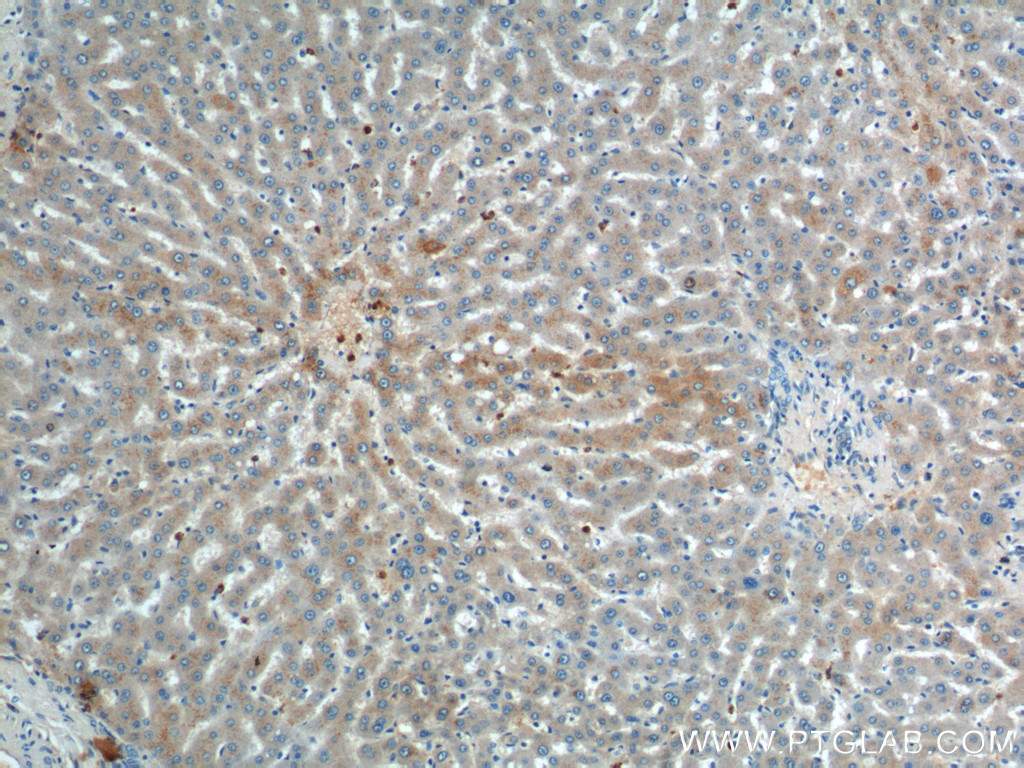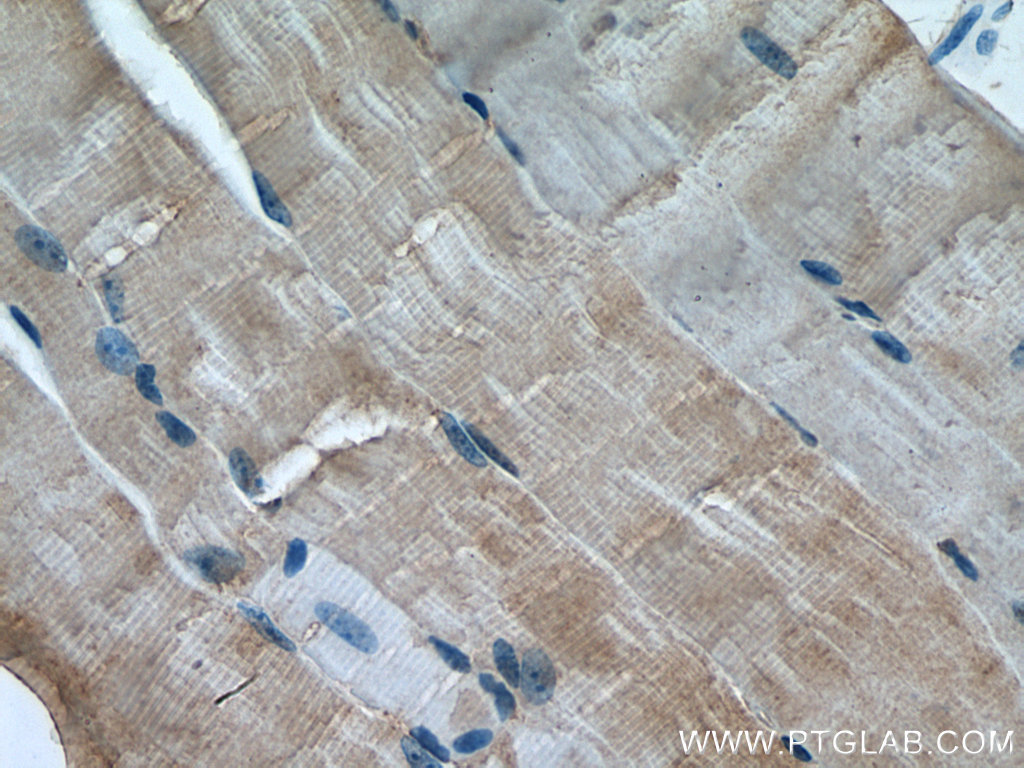验证数据展示
经过测试的应用
| Positive WB detected in | mouse skeletal muscle tissue, HepG2 cells, HEK-293T cells, rat skeletal muscle tissue, HeLa cells |
| Positive IHC detected in | human skeletal muscle tissue, human liver cancer tissue, human liver tissue, mouse skeletal muscle tissue Note: suggested antigen retrieval with TE buffer pH 9.0; (*) Alternatively, antigen retrieval may be performed with citrate buffer pH 6.0 |
| Positive IF/ICC detected in | HeLa cells |
推荐稀释比
| 应用 | 推荐稀释比 |
|---|---|
| Western Blot (WB) | WB : 1:500-1:2000 |
| Immunohistochemistry (IHC) | IHC : 1:50-1:500 |
| Immunofluorescence (IF)/ICC | IF/ICC : 1:50-1:500 |
| It is recommended that this reagent should be titrated in each testing system to obtain optimal results. | |
| Sample-dependent, Check data in validation data gallery. | |
产品信息
20986-1-AP targets ULK1 in WB, IHC, IF/ICC, IP, ELISA applications and shows reactivity with human, mouse, rat samples.
| 经测试应用 | WB, IHC, IF/ICC, ELISA Application Description |
| 文献引用应用 | WB, IHC, IF, IP |
| 经测试反应性 | human, mouse, rat |
| 文献引用反应性 | human, mouse, rat, bovine, goat |
| 免疫原 |
Peptide 种属同源性预测 |
| 宿主/亚型 | Rabbit / IgG |
| 抗体类别 | Polyclonal |
| 产品类型 | Antibody |
| 全称 | unc-51-like kinase 1 (C. elegans) |
| 别名 | ATG1, Autophagy-related protein 1 homolog, EC:2.7.11.1, hATG1, KIAA0722 |
| 计算分子量 | 113 kDa |
| 观测分子量 | 120-150 kDa |
| GenBank蛋白编号 | NM_003565 |
| 基因名称 | ULK1 |
| Gene ID (NCBI) | 8408 |
| RRID | AB_2878783 |
| 偶联类型 | Unconjugated |
| 形式 | Liquid |
| 纯化方式 | Antigen affinity purification |
| UNIPROT ID | O75385 |
| 储存缓冲液 | PBS with 0.02% sodium azide and 50% glycerol, pH 7.3. |
| 储存条件 | Store at -20°C. Stable for one year after shipment. Aliquoting is unnecessary for -20oC storage. |
背景介绍
ULK1, also named as KIAA0722, belongs to the protein kinase superfamily, Ser/Thr protein kinase family and APG1/unc-51/ULK1 subfamily. It is involved in autophagy. ULK1 is required for autophagosome formation. It forms a stable complex with Atg13 and focal adhesion kinase (FAK) family interacting protein of 200 kDa (FIP 200)(PMID:21460634). ULK1 phosphorylates ATG13/KIAA0652. It is involved in axon growth. ULK1 plays an essential role in neurite extension of cerebellar granule cells. ULK1 represents a potential novel prognostic biomarker for HCC patients and may play an important role during the progression of HCC(PMID:23573318).
实验方案
| Product Specific Protocols | |
|---|---|
| IF protocol for ULK1 antibody 20986-1-AP | Download protocol |
| IHC protocol for ULK1 antibody 20986-1-AP | Download protocol |
| WB protocol for ULK1 antibody 20986-1-AP | Download protocol |
| Standard Protocols | |
|---|---|
| Click here to view our Standard Protocols |
发表文章
| Species | Application | Title |
|---|---|---|
Nucleic Acids Res ULK1 phosphorylates Mad1 to regulate spindle assembly checkpoint.
| ||
Mol Psychiatry Impaired macroautophagy confers substantial risk for intellectual disability in children with autism spectrum disorders | ||
Dev Cell Glucose starvation induces autophagy via ULK1-mediated activation of PIKfyve in an AMPK-dependent manner. | ||
J Hazard Mater Graphene oxide disrupted mitochondrial homeostasis through inducing intracellular redox deviation and autophagy-lysosomal network dysfunction in SH-SY5Y cells. |




